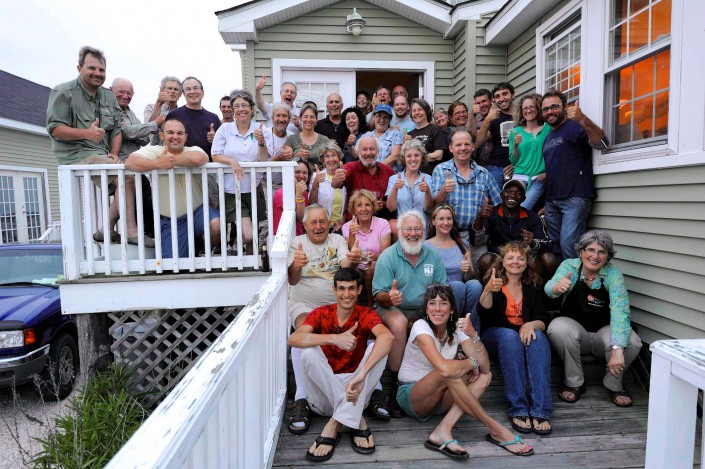2015 Delaware Bay Shorebird Project Begins!
Another Season of the Delaware Bay Shorebird Project Underway
By: Dr. Larry Niles, LJ Niles Associates LLC
Our 2015 Delaware Bay Shorebird Project began on one of the hottest early-May weekends in memory. Clive Minton, an English-expatriate Australian, and I began the project with an early morning survey of each bay beach – Reeds, Cooks, Kimbles, Pierces, Rutgers, Norburys, Villas – dripping sweat and swatting biting gnats as though it was early June, not early May. The sudden burst of summer weather warmed the bay waters, triggering our first horseshoe crab spawn providing sufficient eggs for newly arriving birds.

The birds, on the other hand, followed a more normal schedule. We counted only 400 knots, a smaller number of ruddy turnstones and, surprisingly, no sanderlings. We know the birds are en route; Pat Leary in Florida and Fletcher Smith in Georgia report good numbers of knots, but the birds appear stuck because of the unsettled weather and the rare occurrence of a tropical storm making landfall in North Carolina over the weekend. Soon enough they will come.

The warm weather and the abundant crab spawn bode well for the birds – we want the early bird to gets eggs. But they point to one of the many difficulties facing the red knot and other shorebirds. Will the insidious effects of climate change unravel this elegant machine that provides horseshoe crabs eggs just at the time Arctic-nesting shorebird need them to fly on to their breeding areas?


Our project is 19 years old and so provides a perspective virtually unique among wildlife projects. A long-running project of this kind has many advantages, not the least of which is the human family that has formed around our love of birds. We have nearly the same core team in 2015 as we did in 1997, losing and gaining a few team members as time marches on, but always maintaining an esprit de corp, a common purpose, a lasting bond. The shorebirds, the crabs and the many people who love the Delaware Bay owe a debt of gratitude to this team of intrepid researchers.

The project’s longevity also creates a perspective rare in the world of bird study. Over 19 years we have seen the collapse of the horseshoe crabs; the dramatic free fall of the red knot that resulted this year in a federal listing as Threatened; the rise of irresponsible commercial exploitation of the natural wealth of the bay; a devastating hurricane and more. And yet each year the birds arrive, the crabs spawn and our team coalesces from every corner of the world. Despite the problems and all the concern, the system persists.
But how long will the system persist?
The challenges faced by the birds grow every year. They cling to this amazing migratory bird like barnacles on a wooden boat. Crabs have not recovered from the devastating overharvest of 15 years ago. The international drug cartels still drain the blood of crabs for the valuable chemical lysate without any responsible management. All the while shorebirds, the red knot in particular, face growing threats from climate change: more frequent storms, destroyed coastal habitat, rapidly-changing arctic tundra habitats.

Herein lies the value of a long-term study. This season’s unprecedented early spawn and warm weather could be good or bad. Either way, by season’s end, the team’s dedication, skill, and plain hard work means we will know what happened and what it means compared to 18 other years.

- Delaware Bay Restoration – RestoreNJBayshore.org
- Conserve Wildlife Foundation’s Delaware Bay Shorebird Project
Discover more from Conserve Wildlife Foundation of NJ
Subscribe to get the latest posts sent to your email.